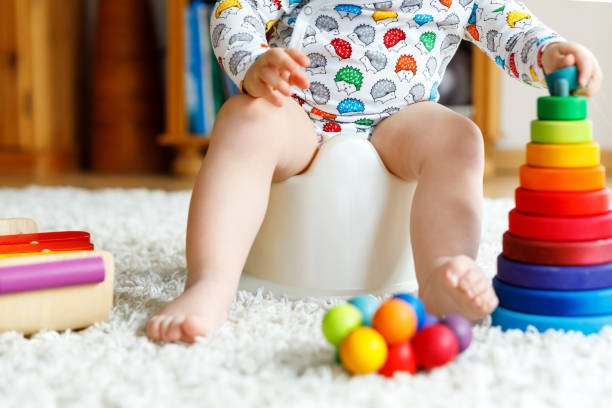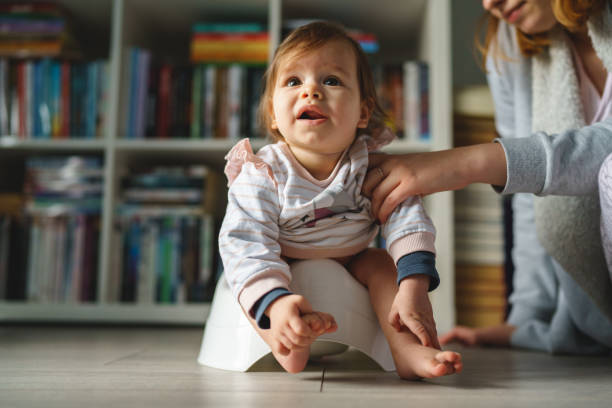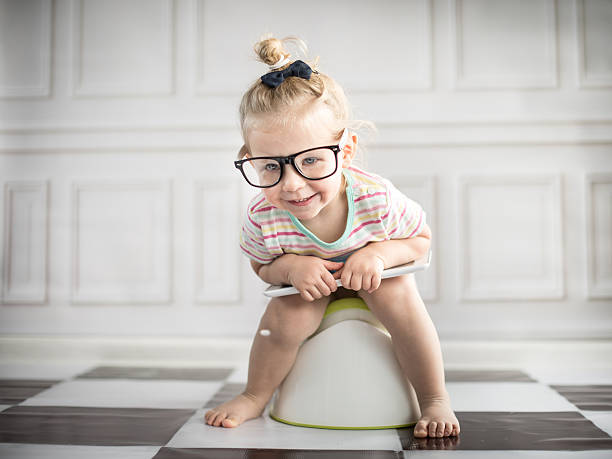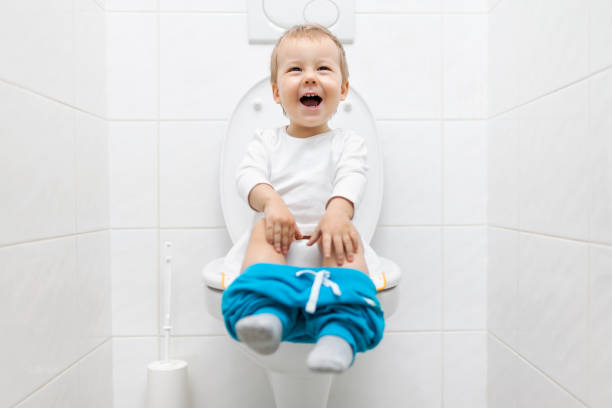Introduction:
Welcome to our comprehensive blog dedicated to parents of children aged 2 to 3 years who are embarking on the exciting journey of potty training. As a parenting specialist, content writer, and search engine optimization analyst, we understand the unique challenges and concerns that come with teaching a child to use the toilet independently. In this blog, we will provide you with valuable insights, practical tips, and expert advice to help you navigate the ups and downs of potty training, including handling accidents and overcoming resistance.
Potty training is a significant milestone in your child's development, marking their transition from diapers to using the toilet like a "big kid." However, it can also be a source of frustration and confusion for both parents and children. Accidents happen, resistance may arise, and setbacks are not uncommon. That's why we're here to guide and support you every step of the way. We will provide you with valuable insights, practical tips, and expert advice on how to successfully navigate the challenges of teaching your child to use the toilet independently. From handling accidents to overcoming resistance, we've got you covered every step of the way.

Remember, potty training is a unique journey for every child. By arming yourself with the right information, techniques, and a positive mindset, you can support your child's development and celebrate their achievements. Stay tuned for more valuable insights and tips to help you navigate the challenges of potty training and make this journey a rewarding and empowering experience for both you and your child!
I. Understanding the Basics of Potty Training
By understanding the basics of potty training, recognizing the signs of readiness, and preparing yourself and your child for this journey, you will establish a strong foundation for a successful potty training experience. Remember, each child is unique, and progress may vary. Stay tuned for the next sections, where we will delve deeper into specific strategies and techniques to support your child's potty training journey.
A. Introducing the Concept of Potty Training:
Potty training is a significant developmental milestone that marks a transition from using diapers to using the toilet independently. In this section, we will delve into the concept of potty training and its importance in your child's development. We will discuss the benefits of potty training, including fostering independence, promoting hygiene, and preparing your child for preschool or daycare.
B. Signs of Readiness: Is Your Child Ready?
One key aspect of successful potty training is identifying whether your child is ready for this journey. In this sub-section, we will explore the signs of readiness to help you determine if your child is prepared for potty training. We will discuss physical, cognitive, and behavioral indicators that signify your child's readiness, such as staying dry for extended periods, showing an interest in the bathroom, and expressing discomfort with soiled diapers.
C. Preparing Yourself and Your Child for Potty Training:
Potty training requires preparation and readiness not only from your child but also from you as a parent. In this sub-section, we will provide guidance on how to prepare yourself and create a positive mindset for this journey. We will discuss the importance of patience, consistency, and encouragement while acknowledging that accidents and setbacks are part of the learning process. Additionally, we will provide tips on how to prepare your child for potty training, including reading potty training books, introducing the potty chair or seat, and involving your child in the process.
II. Setting the Foundation for Success
By creating a positive and supportive environment, choosing the right potty training method, and building a consistent routine, you will set the foundation for success in your child's potty training journey. Stay tuned for the next sections, where we will discuss strategies for overcoming challenges and resistance, as well as techniques to facilitate effective potty training. Remember, every child is unique, and finding the approach that works best for your child is key to their success.

A. Creating a Positive and Supportive Environment:
Creating a positive and supportive environment is crucial for successful potty training. In this sub-section, we will provide tips on how to create a comfortable and encouraging space for your child. We will discuss the importance of setting up a dedicated potty training area, making it inviting with age-appropriate decorations or toys, and ensuring the bathroom is safe and accessible. Additionally, we will explore the significance of using positive language, offering praise and encouragement, and avoiding negative reactions or punishments.
B. Choosing the Right Potty Training Method:
There are various potty training methods available, and choosing the right one for your child can greatly impact their success. In this sub-section, we will explore different approaches, such as the gradual method, the three-day method, and the child-led method. We will discuss the pros and cons of each approach and provide guidance on selecting the method that aligns with your child's temperament, your family's lifestyle, and your own preferences.
C. Building a Consistent Routine:
Consistency is key when it comes to potty training. Establishing a consistent routine helps your child develop a sense of predictability and understanding. In this sub-section, we will discuss the importance of setting regular potty breaks throughout the day, especially during key times such as waking up, before and after meals, and before bedtime. We will provide guidance on creating a visual schedule or using reminders to reinforce the routine. Additionally, we will explore the role of consistency in terms of clothing choices, using the same potty chair or seat, and involving other caregivers or family members in the process.
III. Overcoming Challenges and Resistance
By addressing accidents in a positive manner, understanding and overcoming resistance, and effectively managing regression, you can navigate the challenges that arise during potty training. Remember, patience and consistency are key, and with the right strategies, you can help your child develop independence in using the toilet. Stay tuned for the next sections, where we will dive deeper into specific techniques for effective potty training and tips for encouraging independence. Potty training can come with its fair share of challenges and resistance from your child. In this section, we will provide you with valuable strategies and techniques to overcome these hurdles and keep the potty training process on track.
A. Addressing Accidents:
How to Handle and Minimize Them Accidents are a normal part of the potty training journey. In this sub-section, we will discuss how to handle accidents with patience and understanding. We will provide guidance on how to respond calmly, avoiding punishment or shame, and instead focusing on teaching your child the appropriate response to accidents. We will also offer tips on how to minimize accidents through proactive measures such as consistent reminders, frequent potty breaks, and monitoring signs of discomfort or need to use the bathroom.
B. Dealing with Resistance and Reluctance:
Resistance and reluctance are common reactions from children during potty training. In this sub-section, we will explore strategies to address and overcome resistance. We will discuss the importance of understanding your child's perspective and validating their feelings while gently encouraging them to move forward. We will provide tips on how to introduce incentives or rewards to motivate your child, and how to make the potty training process more engaging and enjoyable through games, songs, or storytelling.
C. Recognizing and Managing Regression:
Regression, where a child who has made progress in potty training reverts to using diapers or having accidents, can be frustrating for both parents and children. In this sub-section, we will help you recognize the signs of regression and provide strategies to manage it. We will discuss the common triggers of regression, such as life changes or stressors, and offer tips on how to provide reassurance, maintain consistency, and re-establish positive habits and routines.
IV. Strategies and Techniques for Effective Potty Training
By following a step-by-step guide, incorporating positive reinforcement techniques, and promoting effective communication and language development, you can facilitate effective potty training for your child. Stay tuned for the next sections, where we will provide tips for encouraging independence and maintaining consistency throughout the process. Remember, each child progresses at their own pace, so be patient, supportive, and celebrate their achievements along the way.

In this section, we will explore a variety of strategies and techniques to facilitate effective potty training for your child. These practical tips will help you guide your child through the learning process and foster their independence in using the toilet.
A. Step-by-Step Guide:
Teaching Your Child to Use the Toilet In this sub-section, we will provide a step-by-step guide to help you teach your child how to use the toilet. We will cover topics such as explaining the process to your child in a simple and age-appropriate manner, demonstrating proper hygiene practices, and guiding them through each step, from sitting on the potty to wiping and flushing. We will also discuss the importance of modeling behavior and encouraging your child to imitate you.
B. Positive Reinforcement:
Rewards and Incentives Positive reinforcement is a powerful tool in motivating your child during potty training. In this sub-section, we will discuss the use of rewards and incentives to encourage your child's progress. We will explore various options, such as sticker charts, small treats, or special privileges, and provide guidance on how to effectively implement them. Additionally, we will emphasize the importance of praising your child's efforts and achievements, creating a positive association with using the toilet independently.
C. Communication and Language Development:
Encouraging Expressions Effective communication plays a vital role in potty training. In this sub-section, we will discuss strategies to encourage your child's expressions and help them communicate their bathroom needs. We will explore the use of verbal cues, such as specific words or phrases, to signal the need to use the toilet. Additionally, we will provide tips on actively listening to your child, observing their non-verbal cues, and responding promptly to their requests for assistance.
V. Tips for Encouraging Independence
By focusing on transitioning to underwear, implementing successful nighttime potty training techniques, and promoting independent toilet use in various settings, you can support your child's overall independence in using the toilet. Remember to be patient, offer praise and encouragement, and celebrate each milestone achieved. Stay tuned for the next sections, where we will discuss maintaining consistency and patience throughout the process.
In this section, we will provide you with valuable tips and strategies to promote independence in your child's potty training journey. These techniques will help your child develop the confidence and skills necessary to use the toilet independently.
A. Transitioning from Diapers to Underwear:
Transitioning from diapers to underwear is a significant step towards independence in potty training. In this sub-section, we will discuss tips for a smooth transition. We will cover topics such as involving your child in the selection of underwear, gradually phasing out diapers, and explaining the change to your child in a positive and age-appropriate manner. We will also provide guidance on dealing with accidents during this transition period and how to manage any resistance or reluctance.
B. Nighttime Potty Training:
Tips for Success Nighttime potty training requires additional strategies and patience. In this sub-section, we will provide tips to support successful nighttime training. We will discuss the importance of limiting fluid intake before bedtime, establishing a consistent bedtime routine, and using waterproof mattress protectors. We will also explore strategies for night-time waking and guiding your child to the bathroom when they need to use the toilet during the night.
C. Promoting Independent Toilet:
Use in Different Settings (e.g., at home, daycare) Promoting independent toilet use in different settings is essential for your child's overall independence and confidence. In this sub-section, we will discuss tips for facilitating independent toilet use at home, as well as in other settings such as daycare or preschool. We will explore strategies for effectively communicating your child's potty training routine to caregivers or teachers, providing a portable potty or seat for outings, and encouraging your child to seek assistance when needed.
VI. Maintaining Consistency and Patience
By maintaining consistency in your approach, managing frustration effectively, and cultivating patience and persistence, you will create an environment that fosters your child's progress and success in potty training. Remember that each child is unique, and progress may vary. Stay tuned for the next section, where we will address troubleshooting and frequently asked questions related to potty training, helping you overcome common concerns and challenges.

Maintaining consistency and patience is crucial for the success of your child's potty training journey. In this section, we will provide guidance on how to stay consistent with your approach, manage frustration, and cultivate patience throughout the process.
A. Staying Consistent:
Importance and Strategies Consistency is key when it comes to potty training. In this sub-section, we will emphasize the importance of maintaining consistency in your potty training approach. We will provide tips on establishing a consistent routine, using consistent language and cues, and ensuring that all caregivers or family members are on the same page. Additionally, we will discuss strategies for addressing setbacks or regressions with consistency and reassurance.
B. Dealing with Frustration:
Coping Techniques for Parents Potty training can sometimes be frustrating for parents, but it's important to manage these feelings in a positive and constructive manner. In this sub-section, we will explore coping techniques to deal with frustration. We will discuss the significance of self-care, seeking support from other parents or support groups, and practicing stress-relief techniques. We will also provide tips on maintaining a positive attitude and reframing challenges as opportunities for growth and learning.
C. Patience and Persistence:
Encouraging Progress at Your Child's Pace Patience and persistence are essential virtues during potty training. In this sub-section, we will discuss the importance of understanding that every child progresses at their own pace. We will provide tips on cultivating patience, such as setting realistic expectations, celebrating small victories, and refraining from comparing your child's progress to others. We will also emphasize the need for persistence in consistently encouraging and supporting your child's efforts, even during challenging times.
Conclusion:
Congratulations on reaching the end of our comprehensive guide to potty training for children aged 2 to 3 years! Throughout this blog, we have provided valuable insights, practical tips, and expert advice to help you navigate the challenges of teaching your child to use the toilet independently. From understanding the basics of potty training to overcoming challenges, promoting independence, and maintaining consistency, you are now equipped with the knowledge and strategies to support your child on this important developmental milestone. Remember, potty training is a unique journey for every child, and progress may vary. It is essential to be patient, understanding, and flexible throughout the process. Accidents, resistance, and regression are normal occurrences, but with a positive and supportive approach, you can guide your child toward success.
As you continue your potty training journey, keep in mind the importance of creating a positive and supportive environment, choosing the right method, and building a consistent routine. Address accidents with patience and minimize them through proactive measures. Overcome resistance by understanding your child's perspective and providing incentives. Manage regression with reassurance and consistency. Encouraging independence is a key goal of potty training. Transitioning from diapers to underwear, achieving successful nighttime training, and promoting independent toilet use in different settings are all important steps. By following these tips and techniques, you will empower your child to take ownership of their bathroom habits and develop a sense of confidence and independence.
Lastly, remember to maintain consistency and patience throughout the potty training process. Stay consistent in your approach, manage frustration effectively, and cultivate patience and persistence. Every child progresses at their own pace, and with your support and guidance, your child will reach their milestones in due time. Thank you for joining us on this journey, and we hope that this blog has provided you with the tools and confidence to navigate the challenges of potty training. We wish you and your child success and many proud moments as you work together towards potty training independence!

